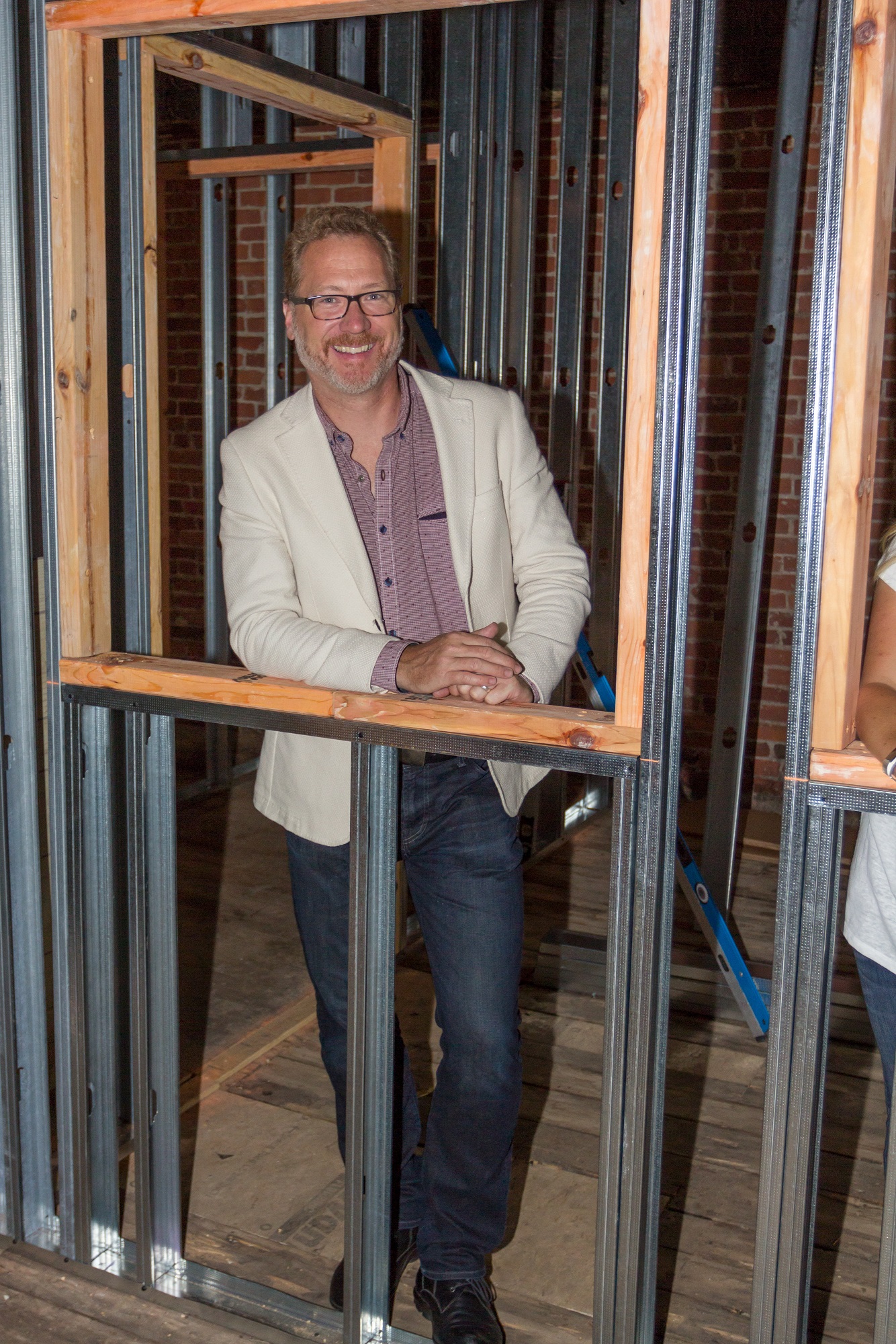Remote Professional Finds Balance with Co-Working Space


Photo by Beacon Photography
Jonathan LaMaster is a digital sherpa connecting businesses with everything they need for the digital world including websites, software and applications and marketing. He works with a variety of mobile app and digital advertising agencies to find the right fit for clients.
How did you get into working remotely?
When I first started working in software sales 15 years ago, I had a central office but I wasn’t there very much. I spent more time on the road and working with clients. I needed to set up a space in my home. Eventually, I went out on my own. I still have access to central offices through my partners, but I use those mainly for meeting with clients. Most of what I do is from my home office currently, though a new co-working space has opened up in my hometown and I am one of the co-hosts. It’s nice to have that option of working around other people at times and having a local office to use for sales meetings, etc, though sometimes I’m more productive with certain tasks at my home office.
How did working at home compare to having a central office?
In the beginning, it was very difficult. It was challenging to stay focused. I would get distracted by something I needed to do around the house or the yard. If the surf was good, I’d go surfing. Sometimes I still do! But I know that that will necessitate making up that work in the evening or whenever I can.
Did you change that and how?
Yes, I learned over time to become more focused and to set aside a certain amount of time for things. I also set up an actual schedule. For instance, I try not to have sales meetings on Mondays or Fridays. I reserve those for office work. I stay flexible, but it helps to have certain times for certain activities.
What’s great about working from home?
The flexibility is fantastic. As a parent of two young children, it’s huge for my family. But there is a downside too. My son is out sick today and he’s already snuck past the gatekeeper, his grandmother, a couple of times. Kids don’t have that understanding of work.
How do you manage the challenges?
I have found that having an office at co-working space can provide a good balance. You can get out of the house, be around other people and still get things done.
What is your advice to remote workers?
You have to be available to your clients and your team, but you also have to stay on top of the work that needs to be done. Give yourself deadlines, but understand that things will pop up. Estimate how long something will take and then add time to that when you are making plans because things usually take longer than you expect. You need those fudge factors. If you think something is going to take two hours, give yourself three or three and a half hours for it.
If you are a part of a team, figure out the best way to communicate whether it’s Basecamp, Slack, Teamwork or something like that.
I like using video conferencing, especially with partners and co-workers. There’s a different feeling. It forces you to focus more and you get to know people better. You can see their body language. You can see if they’re stressed out or if they’re angry. You might not pick up on that over the phone.
It helps to have redundancies. I have my phone enabled as a hotspot, which has come in handy both when I’m out and when I’m at home and the Internet doesn’t work.
You have to be vigilant about your time. The work has to get done. If you’re off horsing around and you’re not focused, then you will be doing it at a time that is even more inopportune.
Also, it seems really simple, but this is important – make sure you get up and move around (for the sake of your back and your health!). When you’re at home, it’s easy to settle in at your desk and just stay there for hours. Having a standing desk or adjustable sit and stand convertible desk solution is a nice option.

